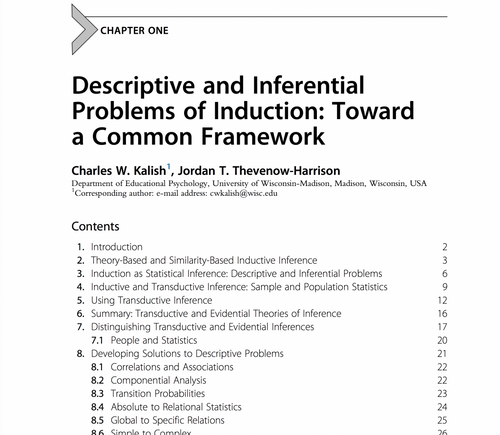A book chapter in Psychology of Learning and Motivation, Volume 61.
There are many accounts of how humans make inductive inferences. Two broad classes of accounts are characterized as "theory based" or "similarity based." This distinction has organized a substantial amount of empirical work in the field, but the exact dimensions of contrast between the accounts are not always clear. Recently, both accounts have used concepts from formal statistics and theories of statistical learning to characterize human inductive inference. We extend these links to provide a unified perspective on induction based on the relation between descriptive and inferential statistics. Most work in Psychology has focused on descriptive problems: Which patterns do people notice or represent in experience? We suggest that it is solutions to the inferential problem of generalizing or applying those patterns that reveals the more fundamental distinction between accounts of human induction. Specifically, similarity-based accounts imply that people make transductive inferences, while theory-based accounts imply that people make evidential inferences. In characterizing claims about descriptive and inferential components of induction, we highlight points of agreement and disagreement between alternative accounts. Adopting the common framework of statistical inference also motivates a set of empirical hypotheses about inductive inference and its development across age and experience. The common perspective of statistical inference reframes debates between theory-based and similarity-based accounts: These are not conflicting theoretical perspectives, but rather different predictions about empirical results.

